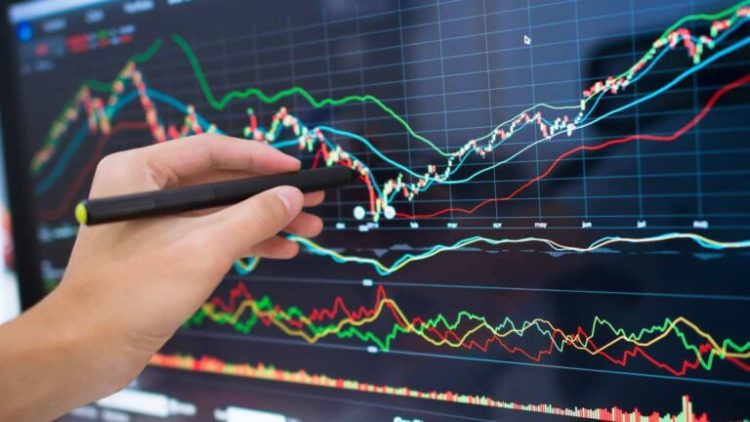In recent years, growth stocks—particularly U.S. tech giants—dominated the global equity landscape. But 2025 has brought a shake-up. As interest rates stabilize, inflation lingers, and macro uncertainty rises, investors are questioning whether the era of growth supremacy is drawing to a close. Evidence is mounting: money appears to be flowing from high-multiple growth names into value equities offering strong dividends, steady earnings, and more attractive valuations. This article examines whether this pivot is temporary or the start of a new market regime, explores expert insights, and offers practical investment guidance.
Why Now? Macro Forces Powering the Rotation
Three key macro trends are realigning investor preferences:
• Peak Interest Rates
Rapid rate hikes from 2022–2024 pushed bond yields higher, reducing the appeal of long-duration growth stocks. Now central banks are signaling policy pauses—the “higher for longer” narrative is insufficient to sustain growth premiums. Value stocks with current income stand to benefit more in this climate.
• Inflation Isn’t Going Away
Persistent inflation erodes the present value of distant earnings, undercutting high P/E growth stocks. In contrast, companies able to raise prices or maintain margins—common in value sectors—are seen as safer.
• Geopolitical and Supply‑Chain Uncertainty
Trade tensions, regional risks, and fragmented global trade encourage investors to favor companies with stable domestic revenues and defensive positioning, further dampening growth enthusiasm.
Evidence of Rotation: What Flow Data Shows
ETF inflows early in 2025 have tilted significantly toward value-focused strategies. Broad value ETFs like IVE and VTV have seen net inflows, while growth funds have recorded outflows. Sector shifts confirm this: financials, energy, industrials, and healthcare are outperforming, while mega-cap tech shows signs of consolidation.
Goldman Sachs, Wells Fargo, and Morningstar have all highlighted the rotation in published research. Value beat growth in the first half of the year, and global value indices in Asia and Europe are outperforming for the first time in years.
Expert Opinions on Sustainability
• Morningstar: The team notes a defense-driven shift toward value relative to growth, highlighting valuations as a key catalyst.
• Morningstar Europe/Asia Analysts: They observe rotation in international markets too—value is rising globally, not just in the U.S.
• Wells Fargo: Their strategist team identifies sectors including banks, energy, and utilities as poised to outperform in the coming months.
• Advisor Perspectives: Retail and institutional investors alike have begun rebalancing portfolios toward value and dividend income.
• Hartford Funds: Emphasize the importance of maintaining balance—value today, but with continued allocation to innovation and growth.
Strategic Investing Tips for 2025
1. Core-Satellite Approach
Use a broad market ETF (e.g., S&P 500 or ACWI) as the portfolio core. Surround it with value “satellites” focused on financials, energy, materials, and income-oriented defensive sectors.
2. Equity Exposure Adjustments
Overweight financials—to capture higher margins from elevated interest rate environments. Add energy and materials for cyclical recovery exposure. Include utilities, healthcare, consumer staples for stability.
3. Global Diversification
Investors should not overlook value opportunities outside the U.S.—European and Japanese markets have demonstrated stronger value momentum year to date.
4. Tactical Rebalancing
Monitor valuation spreads between growth and value. Rotate capital incrementally as relative performance shifts.
5. Hedge Using Alternatives
Consider yield-enhanced strategies such as covered-call funds or dividend-growth portfolios, which offer defense with optional upside.
6. Keep Core Growth Exposure
Don’t abandon growth entirely—AI, cloud, and next-gen software remain structural tailwinds. Selectively overweight innovation through thematic ETFs or focused funds.

Potential Risks to the Rotation Thesis
• Rate Surprises: If inflation resurges, central banks may resume hikes, potentially reinforcing growth stock resilience.
• Stimulus or Fiscal Easing: Any major fiscal package—especially in the U.S.—could reinvigorate growth sectors.
• Geo‑Tech Breakthroughs: AI-driven productivity or deep tech advancements could reignite long-duration asset appetite.
Key Indicators to Watch
• Bond Yields: Falling long-term yields would support growth.
• Fed and ECB Guidance: Rate signals can shift rotation trends fast.
• Flow Data: Weekly ETF flows show real-time investor positioning.
• Valuation Gaps: Track P/E and dividend yield spreads between growth and value universes.
Long-Term Outlook: A New Balance Between Growth and Value
The story is more nuanced than a simple tug-of-war. The so-called “Great Rotation” reflects deeper structural changes: maturing growth cycles, inflation uncertainty, and shifting global trade dynamics. Yet data and expert opinions suggest we are in the early innings of a transition, not a regime flip.
Over the coming months, a balanced, dynamic portfolio—anchored in value but tuned to innovation—may outperform in diverse market environments. Discipline, broad diversification, and flexible rebalancing will be key.
Final Take
The rotation from growth to value is more than a fad—it reflects durable macro trends and investor sentiment shifts. But growth remains vital, driven by technology and innovation. The winning strategy in 2025 may be a well-balanced, adaptive approach that recognizes both rotation and transition.














































